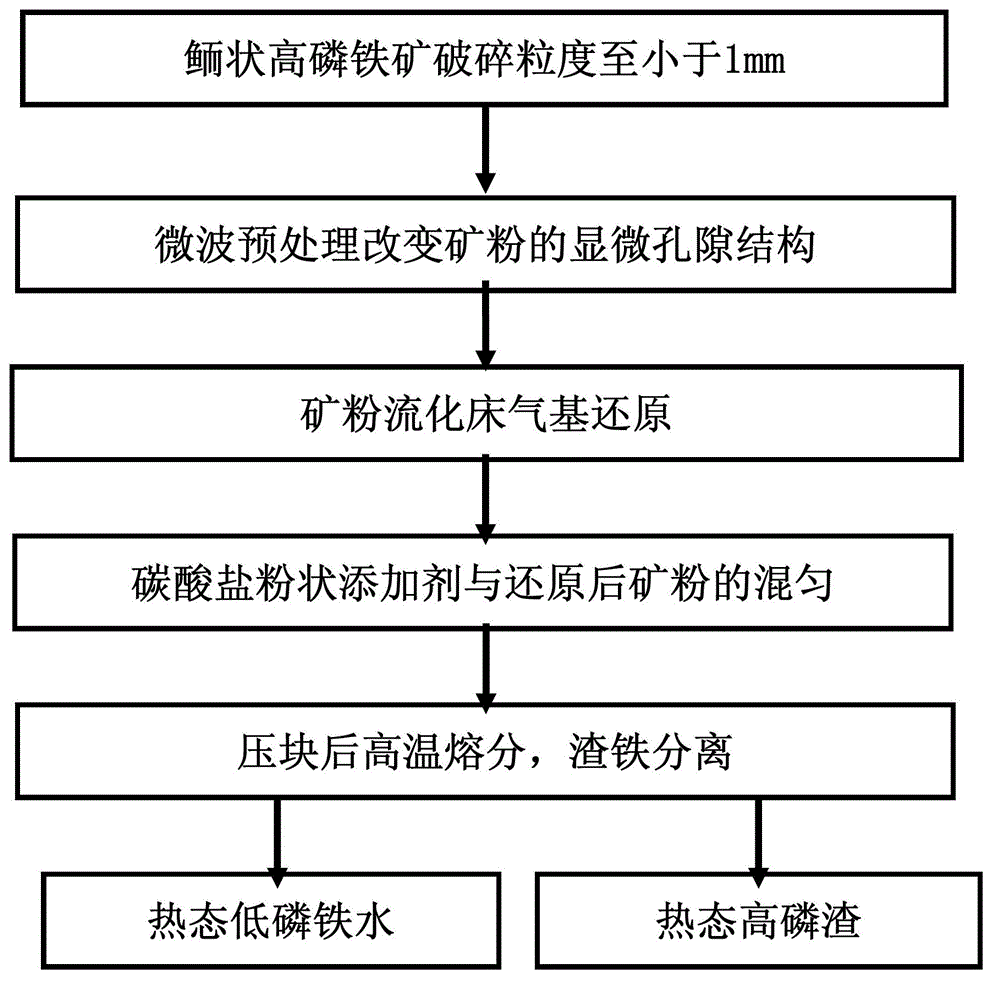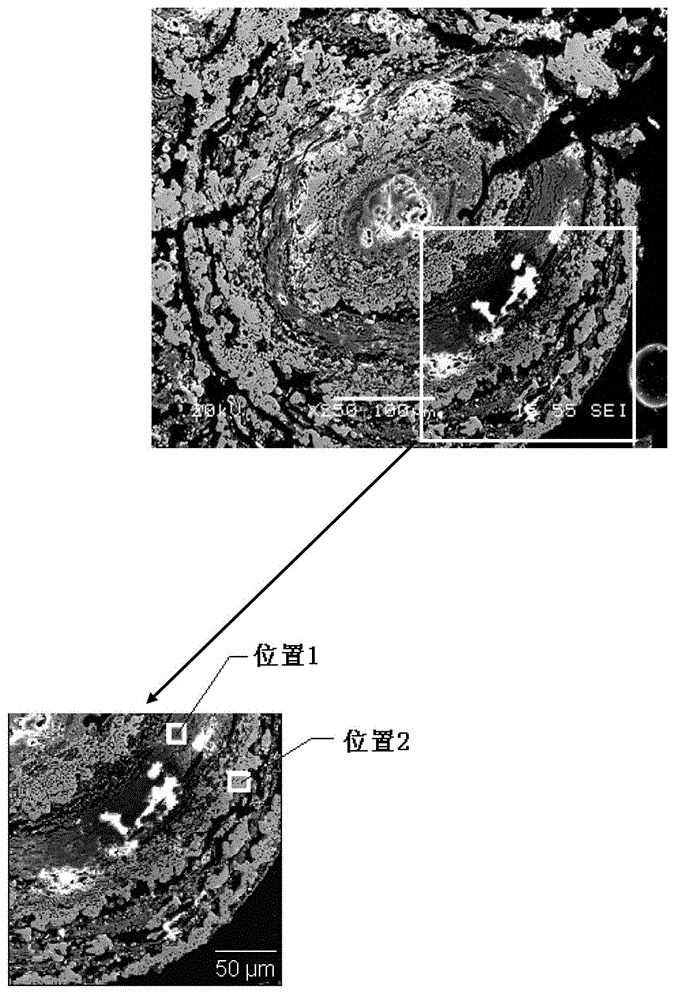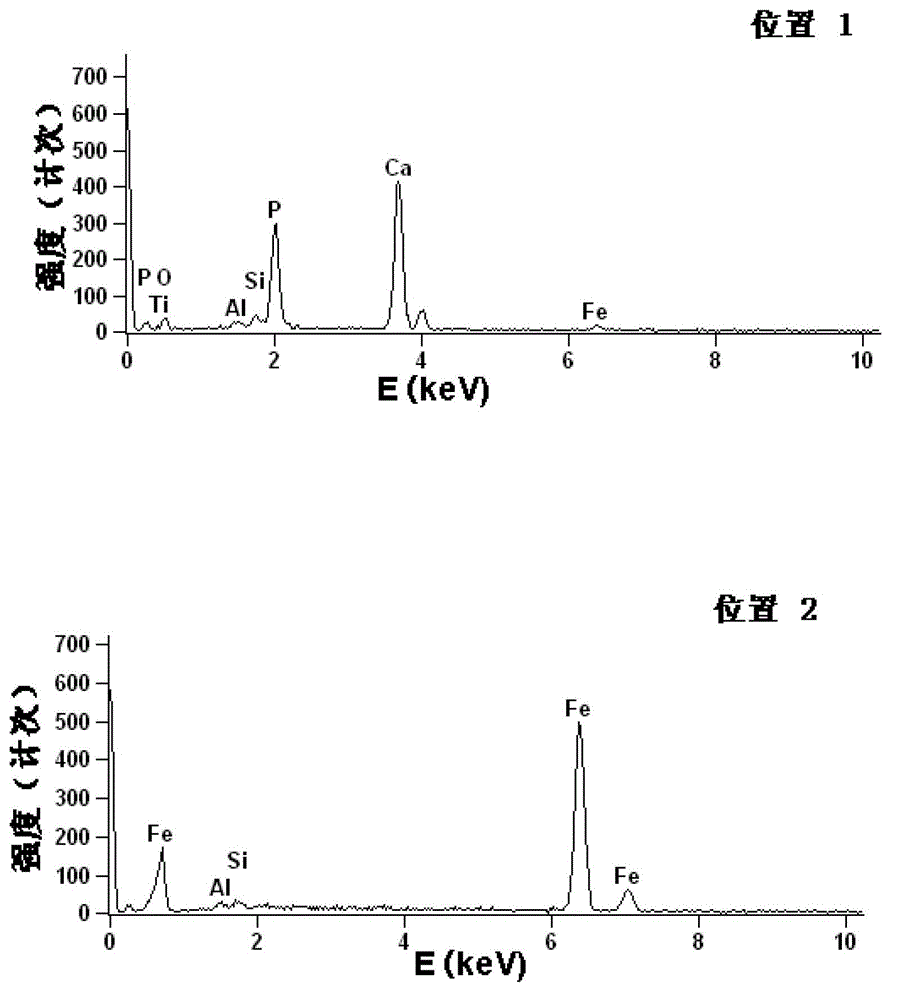Method for realizing phosphorus removal of oolitic high-phosphorus iron ores by combining enhanced gas-based reduction and high-temperature smelting separation
A technology of high-phosphorus iron ore and enhanced gas, which is applied in the field of iron and steel metallurgy-ironmaking, can solve the problems of low metallization rate of ore powder gas-based reduction, difficulty in metallization rate exceeding 70%, and affecting the separation effect of slag and iron. The effect of reducing energy consumption, fast reduction speed, and sufficient gas-solid contact
- Summary
- Abstract
- Description
- Claims
- Application Information
AI Technical Summary
Problems solved by technology
Method used
Image
Examples
Embodiment 1
[0043] Fig. 1 is the process flow diagram of realizing the dephosphorization and iron extraction of oolitic high-phosphorus iron ore in the present invention; Including the following steps:
[0044] (1).Material crushing: The oolitic pyrite is crushed to a particle size of less than 1mm, and the obtained mineral powder is dried at 300°C for 3 hours.
[0045] (2). Microwave pretreatment: Weigh 1000g of ore powder and place it in microwave heating equipment; insert a K-type thermocouple into the ore powder material layer, and the voltage measured by the thermocouple will be directly displayed as the temperature of the ore powder by the digital instrument; The microwave input power of the device is controlled by the on-off thyristor, and the digital instrument controls the on-off of the thyristor. Set the microwave power of the reactor so that the heating rate of the ore powder reaches 150-200°C / min, and the maximum temperature of the ore powder is set at 800°C; when the tempera...
Embodiment 2
[0050] (1).Material crushing: Oolite is crushed to a particle size of less than 1mm, and the obtained mineral powder is dried at 300°C for 5 hours.
[0051] (2). Microwave pretreatment: Weigh 1000g of ore powder and place it in microwave heating equipment, and insert a K-type thermocouple into the ore powder material layer. The voltage measured by the thermocouple is directly displayed as the mineral powder temperature by the digital instrument; the microwave input power of the reactor is controlled by the on-off thyristor, and the digital instrument controls the on-off of the thyristor. Set the microwave power of the reactor so that the heating rate of the ore powder reaches 150-200°C / min; the maximum temperature of the ore powder is set at 800°C, and when the temperature of the ore powder material layer reaches the set temperature, keep the temperature for 3 minutes, stop microwave heating, and cool naturally to room temperature.
[0052] (3). Fluidized bed reduction: The m...
Embodiment 3
[0056] (1).Material crushing: The oolitic iron ore is preliminarily crushed to a particle size of less than 1mm, and the obtained mineral powder is dried at 300°C for 4 hours.
[0057] (2). Microwave pretreatment: Weigh 1000g of ore powder and place it in microwave heating equipment; insert a K-type thermocouple into the material layer, and the voltage measured by the thermocouple is directly displayed as the temperature of the ore powder by a digital instrument, and the reactor microwave The input power is controlled by the off-type thyristor, and the digital instrument controls the on-off of the thyristor. Set the microwave power of the reactor so that the heating rate of the ore powder reaches 150-200°C / min, and the maximum temperature of the ore powder is set at 800°C. After the temperature of the ore powder material layer reaches the set temperature, the temperature is kept constant for 3 minutes, and the microwave heating is stopped.
[0058] (3). Fluidized bed reduction...
PUM
 Login to view more
Login to view more Abstract
Description
Claims
Application Information
 Login to view more
Login to view more - R&D Engineer
- R&D Manager
- IP Professional
- Industry Leading Data Capabilities
- Powerful AI technology
- Patent DNA Extraction
Browse by: Latest US Patents, China's latest patents, Technical Efficacy Thesaurus, Application Domain, Technology Topic.
© 2024 PatSnap. All rights reserved.Legal|Privacy policy|Modern Slavery Act Transparency Statement|Sitemap



